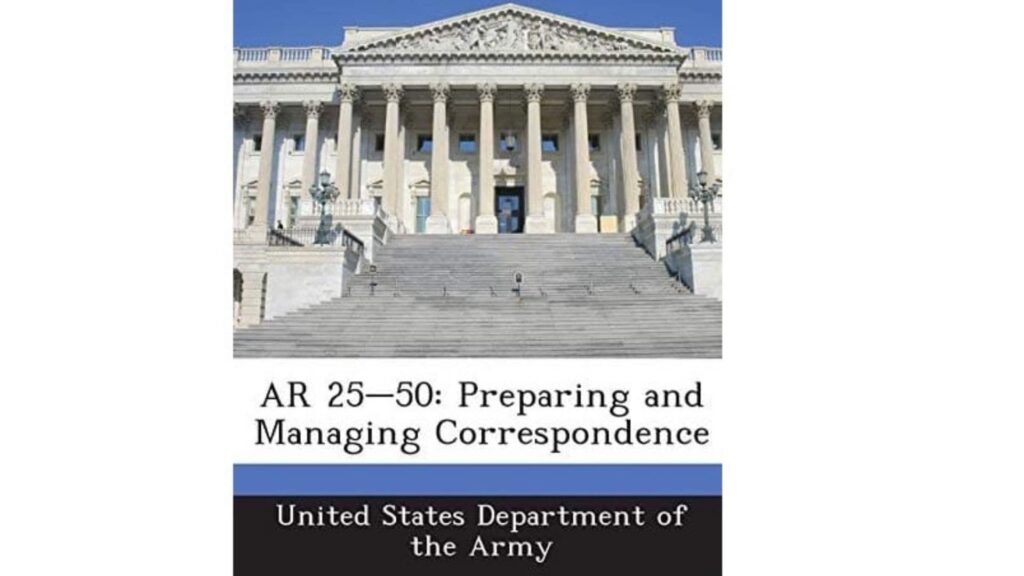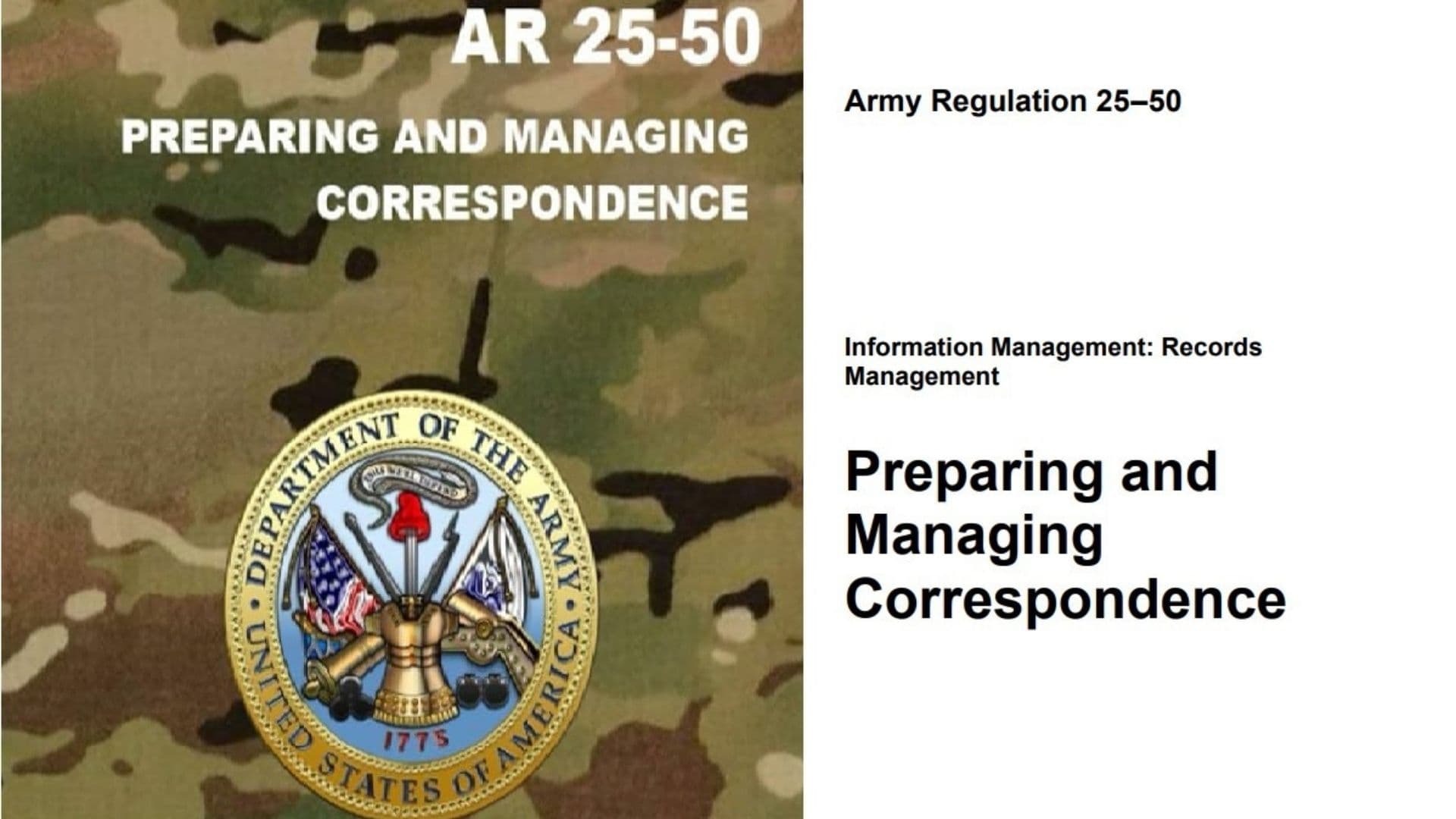Army Regulation 25-50 (AR 25-50) regulates how to prepare and manage official correspondence. It focuses on clear and concise writing, active voice, correct grammar and punctuation, and the use of acronyms, abbreviations, and military terminology. The regulation outlines three authorized Army correspondence forms: letters, memorandums, and messages. It also covers topics such as correspondence chains, correspondence guidance, and Army Writing Style.
The AR 25-50 regulation is an Army publication that covers the standard formats and procedures associated with Army correspondence. It outlines the proper way to write a memo, how to enclose a letter, and how to mark classified documents. It also explains the appropriate level of formality and how to properly keep records.
The regulation also sets out the Army Writing Style, a set of rules that helps make written communication more precise and effective. It emphasizes the use of active voice, clear and concise language, and correct grammar and punctuation. It also outlines the three forms of official Army correspondence: a letter, a memorandum, and a message.
There are several reasons why the AR 25-50 regulation is important. First, it lays out the correspondence hierarchy and provides guidance on how to format and write letters and memorandums. It also explains how to properly distribute and file written communication and how to record the date and recipient of a letter or memorandum. The regulation also outlines what information should be included in each type of document and how to address people within the chain of command. Finally, the regulation offers advice on protecting sensitive and classified information in written correspondence and securely sending electronic signatures.

AR 25-50 – Preparing and Managing Correspondence
AR 25-50 sets out three different forms of authorized correspondence: a letter, a memo, and a message. It also provides information on how to prepare and manage these documents.
The Army writing style in the regulation emphasizes clear and brief writing for official documents and provides guidelines for using military terminology, acronyms, and abbreviations. It also advises against using passive voice and encourages the use of active voice. The regulation also guides Army personnel on how to format documents and how to address a memorandum and letter.
A memo format includes a header with the name of the document, the organization, the memorandum, and the date. The body of the memorandum contains the actual message. The memorandum is then signed with the date and addressed to a specific individual or group of individuals.
Correspondence documents must be prepared on the proper stationery with a formal title and include staggered tabs to identify and separate background documents and enclosure or attachment documents from the correspondence. Program office staff then enter These documents into the Executive Secretariat electronic document management system. The original and two copies of the document must be forwarded to the Executive Secretariat.
The AR 25-50 regulation on preparing and managing correspondence outlines the standards that army personnel should follow when writing memos and letters. This includes ensuring that all official letters and memos are clear, concise, and professional. It also covers how to format and send them and keep records of the correspondence.
This regulation also sets the Army Writing Style, which is a set of rules meant to make all official Army writing more precise, organized, and effective. It also covers the use of active voice, clear and concise language, proper grammar and punctuation, and appropriate military terminology. It also explains how to properly address and file mail, such as routing, transmittal, and call slips.
